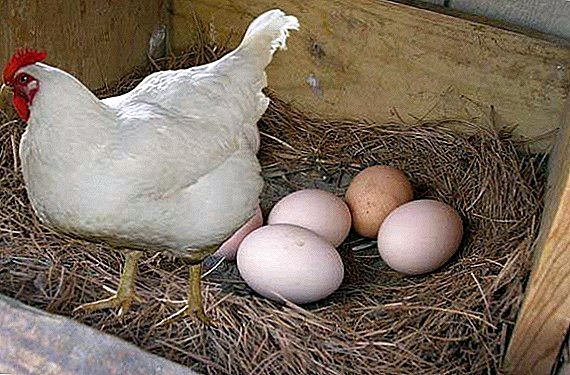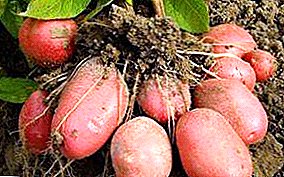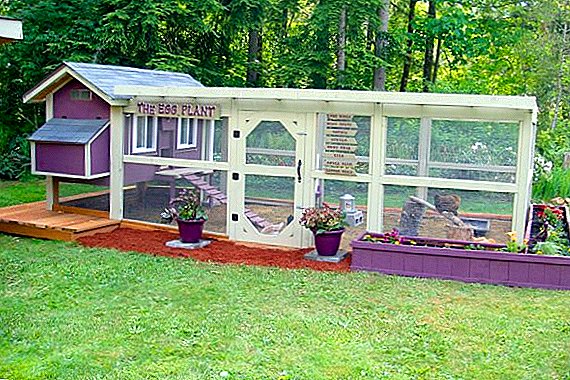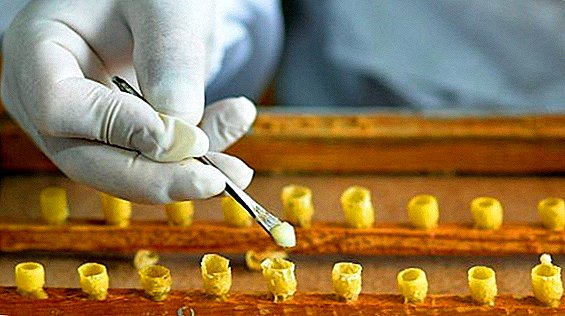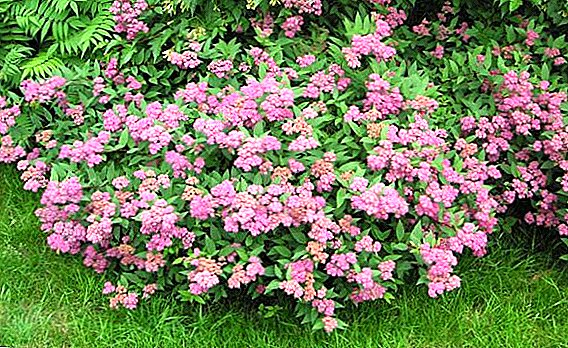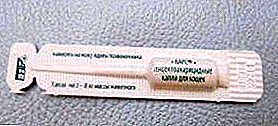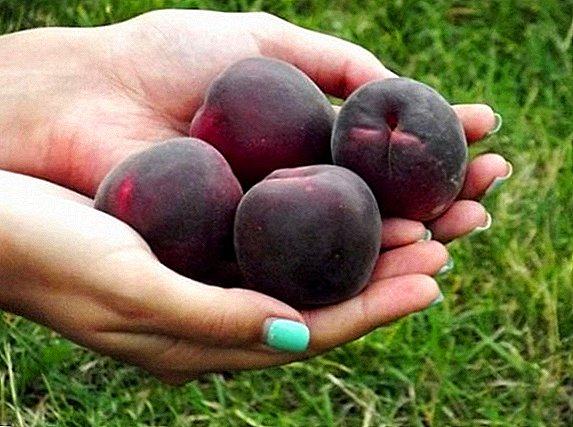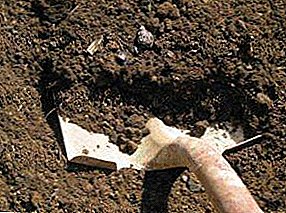
Spring comes, and with it the annual hassle associated with garden work. Greenhouse requires special attention: the frame needs to be repaired, the soil must be disinfected and renewed. Gardeners know what excellent results a well-groomed greenhouse gives, so they don’t spare time or money for its preparation.
Land preparation in a greenhouse before planting begins in late March or early April and includes a number of mandatory activities: disinfection of land, warming up of soil, increase of soil fertility.
What methods of soil disinfection exist?
Disinfection of the soil allows you to protect plants from diseases and pests. Some gardeners naively believe that during the winter frosts all harmful microorganisms die. This is not true.
Bacteria and fungi easily survive low temperatures, and in the spring they wake up and continue to vigorously grow, causing irreparable damage to delicate greenhouse crops. So how to process a greenhouse after winter?
Disinfection Disinfection of a greenhouse in the spring should minimize the risk of disease, but not damage the quality of the product.
Bleach treatment
Chloric lime is used in the fall, immediately after harvest, and in the spring. 
This is one of the proven methods of soil disinfection. In the fall, the soil for the greenhouse can be carefully shed with a concentrated solution of lime, but in the spring you need only a little sprayso that the composition does not damage the growth of future plants.
In 10 liters of water, dilute 400 g of lime and let it brew for 4 hours. After that, the weak solution formed should be drained into a spray bottle to spray the soil, and a thick residue should be applied to the ceiling and walls of the greenhouse.
Bleach eliminates:
- black legs;
- keels;
- gall nematode;
- phytophtora;
- white rot.
Sulfur treatment
Fumigation greenhouse sulfur - A common way to deal with harmful microorganisms. As a result of sulfur combustion, oxides of sulfuric and sulfuric acids are released, which effectively fight bacteria. The only disadvantage of this method is that the formed sulfur dioxide may not completely evaporate: it will remain in the soil and will pass into the fruits of the planted plants.
There are two ways to handle sulfur:
Burning Sulfur Crystals. To process 1 m3 of the greenhouse, you need to take 50-150 g of sulfur (depending on the number of last year's pests). Crystals should be laid out on metal trays, placed in different corners of the greenhouse, and then set on fire.
The use of special sulfur "checkers". They need to place in the corners of the greenhouse and ignite.
Important! Both methods require compliance with the simplest security measures. Fumigation shall be carried out by a person in a gas mask and protective gloves. After the ignition of crystals or "checkers" in the greenhouse can not be.
 In the fumigated room it is necessary to maintain a low temperature - 10-15ºС. After processing, the greenhouse should be closed, and after 3 days - to air.
In the fumigated room it is necessary to maintain a low temperature - 10-15ºС. After processing, the greenhouse should be closed, and after 3 days - to air.
Sulfur eliminates:
- fungi;
- mold;
- ticks;
- slugs
Disinfection with formalin solution
One month before planting a greenhouse can be processed 40% formalin solution. Before the procedure, the temperature in the greenhouse should be reduced to 10-12ºС so that formalin does not evaporate. Processing is carried out in a gas mask. After the procedure, the temperature in the greenhouse should be increased to 25 ° C, and a day later - to ventilate the room.
Formalin destroys:
- spider mite;
- fungus;
- mold;
- whitefly.
Copper sulfate treatment
Thorough processing copper sulfate is produced in the fall; in the spring, the walls and ceiling of the greenhouse should be sprayed with a 10% solution of this substance.
Copper sulfate destroys:
- phytophtora;
- powdery mildew;
- spider mite;
- rot;
- scab
Treatment with special preparations
Now the stores offer a large selection of drugs designed to combat with a certain kind of bacteria, so gardeners can choose the one that best suits their greenhouse. Special formulations are also good because they do not require a long break: after them you can continue working in the greenhouse.
These drugs have a beneficial effect on soil fertility: they fix nitrogen, decompose pesticides, bind heavy metals, produce natural growth hormones.
Soil replacement
it the most radical and efficient way control of pathogens: the soil affected by bacteria is completely eliminated and replaced with a new one.
Soil replacement - occupation difficult and expensivetherefore not suitable for large greenhouses.
Replacing planted crops
Gardeners know that different plants are subject to various diseases. Therefore, it is sometimes easiest to plant in a contaminated soil a new culture that is resistant to the pathogens present.
Temperature method
Most germs can be disposed of carefully. spill the soil with boiling water. After watering the beds, cover with cellophane film so that the steam penetrates into the lower layers of the soil and disinfects them.
A photo
Look at the photo: how to process the greenhouse before planting






How to get rid of phytophthora?
Many gardeners are seriously concerned about the question: how to process a greenhouse from phytophtoras in the spring?
Phytophthora - A bad dream of any gardener. This is a fungus that affects all solanaceous crops - tomatoes, potatoes, eggplant, pepper. Phytophthora can ruin any plant from roots to fruits.
Fruits of a plant affected by blight, can not be eaten, and the plant itself must be immediately pulled out and burned to prevent the disease from spreading to healthy bushes. However, such methods often do not bring results: once appeared, the phytophtora can destroy half of the crop.
Important! Prevention of phytophthora should start in the fall. After harvesting, you need to carefully eliminate all residues of plants and burn them outside the garden.
If in the greenhouse there was an outbreak of late blight, it is necessary to treat the soil with a special preparation - "Fitosporin". Before the next planting, the treatment should be carried out at least 3 times.
What if the earth is "tired"?
Fatigue of the earth in the greenhouse - this is nothing like the lack of fertility. Every year, plants take all the nutrients out of the ground, depleting and weakening it. To get a new crop, it requires nitrogen, phosphorus, calcium, potassium, and more. Therefore, the supply of nutrients should be replenished.
 The easiest way to improve soil fertility is plant green mans in the greenhouse. So are called plants that in a short time form a large amount of green mass: phacelia, cress, vetch, mustard, rye, oats, clover. Their shoots and roots are an excellent source of organic matter and soil microorganisms. 3 kg of such greens replace 1.5 kg of manure, which has always been considered the best fertilizer for the soil.
The easiest way to improve soil fertility is plant green mans in the greenhouse. So are called plants that in a short time form a large amount of green mass: phacelia, cress, vetch, mustard, rye, oats, clover. Their shoots and roots are an excellent source of organic matter and soil microorganisms. 3 kg of such greens replace 1.5 kg of manure, which has always been considered the best fertilizer for the soil.
When siderats sprout and grow, they are cut, and then plowed into the ground at a depth of 2-3 cm. The dead roots of siderats become food for worms that loosen the soil, improve its structure and saturate the soil with air. After 1-2 weeks, the main crops can be planted in a plowed place.
How to fertilize the land?
When preparing the greenhouse for planting, fertilizer plays an important role. A gardener can use either organic fertilizer or ready-made mineral complexeswhich contain all the necessary nutrients.
Organic fertilizer for the greenhouse
As organic fertilizer River sludge, peat, tree bark, reed, humus, bird droppings, algae are used. The undoubted advantage of such fertilizers is their naturalness.
They saturate the soil with nutrients and improve the vital activity of beneficial microorganisms. In addition, only with their help you can easily warm the soil, which will allow to plant the first plants much earlier.
The most useful fertilizer for the soil is manure. It has all the nutrients. The soil fertilized with manure becomes loose, light, airy.
Manure can be introduced into the ground both in autumn and spring. In the fall, you can use fresh material: until spring, it will perepret and turn into an excellent dressing for future plants. But in the spring it is better to use rotted manure: caustic substances contained in the fresh material can damage the root system of the seedlings.
Mineral fertilizers
A significant increase in crop yields is facilitated by fertilizing the soil with mineral supplements. But they should be used with caution: improper dosage can spoil the entire fertile layer of the earth. A gardener who decides to fertilize greenhouse soil with mineral dressings should definitely read the instructions.
There are fertilizers that supply the soil with some specific element: phosphorus, nitrogen or potassium. They are called simple. But the most popular complex fertilizersthat provide seedlings all at once with a set of nutrients.
Every gardener knows how important it is to prepare the soil preparation in the greenhouse for planting. After all, only if you carefully follow all the recommendations, you can get a good harvest and provide your family with environmentally friendly products for the whole winter.


